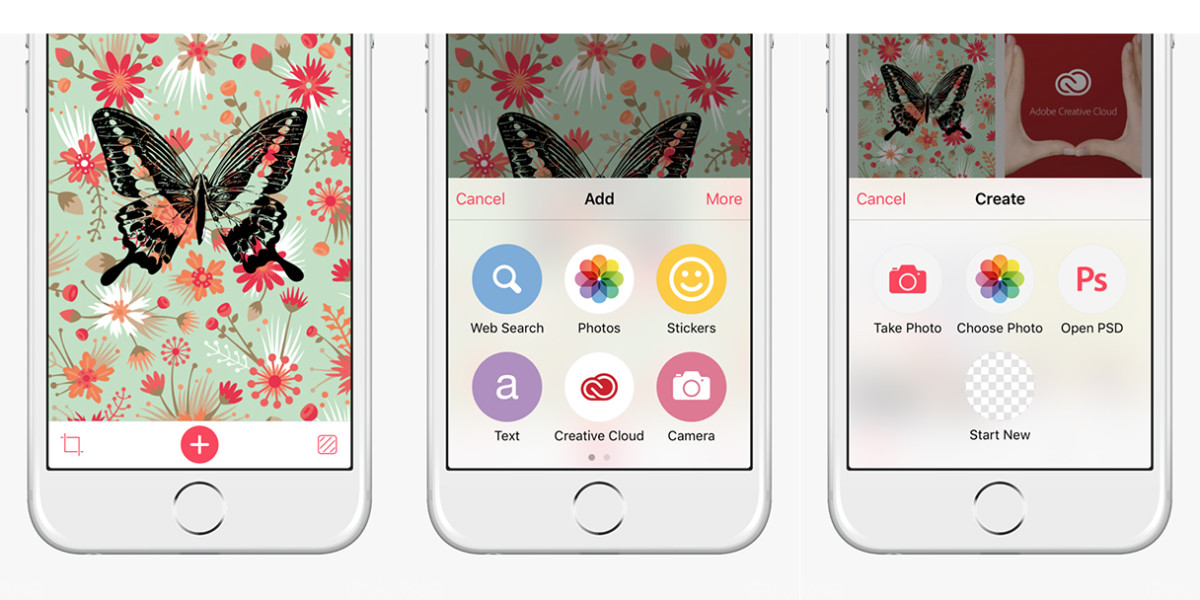The Adobe I/O Developer Update
The Adobe I/O Developer Update
Cutting Edge Cloud Technologies and a Commitment to Developers in 2018
Adobe I/O is the master link to Adobe’s Cloud Platform; with it, we’re building the next generation of our flagship creative, marketing, and document solutions, while tapping into all of Adobe’s cutting edge content, data, tools, and AI services. Now, more than ever, we’re extending those same resources to our developer community, providing a central hub for APIs, SDKs, and platform technology to all developers who want to integrate with and extend Adobe’s advanced technology.
2017 saw the emergence of the ‘Experience Business,’ where the art of content and the science of data became the core of creating experiences. Touching every facet of the digital journey, from content creation, to rich analytics, to continuous optimization, Adobe’s Cloud Platform blends content and data at massive scale. Adobe I/O forms the heart of our Developer ecosystem providing tools and technologies for developers to tap into the power of Adobe Creative Cloud, Adobe Document Cloud, and Adobe Experience Cloud.

In 2018, we’re taking things up a notch, strengthening our ‘API first’ approach to extensibility, while offering some exciting new capabilities to code event-driven experiences, work with Adobe data in a serverless environment, and harness Adobe’s major advancements in AI with Adobe Sensei. We’re also continuing our commitment to creating platform technology tools to help you build the applications you want. Here’s a sneak peak of what you can expect from Adobe I/O this year.
1. API First: The Backbone of Adobe’s Extensibility Plans
One of the original goals of Adobe I/O was to become the home for all developer-focused services, especially APIs for all of our own products. Since its founding, I/O has continually expanded its API first efforts, which Group Product Manager Ryan Stewart says will grow in 2018.
“It’s a philosophical mindset on how we think about our products. We want to make sure we’re building APIs for the key features and solutions in our apps,” said Stewart. “Then developers can use those APIs directly in their own experiences. They’re not tied to the UI that Adobe provides and developers are able to build on top of those APIs to solve specific problems for their business.”
For John Pritchard, Adobe I/O’s Sr. Director of Engineering, it’s about offering up the technology that Adobe excels at to developers, allowing them to build better and more effective apps. For example, app developers can tap into Adobe’s top-notch image and sharing technologies, using Adobe Creative Cloud via Adobe I/O, without needing to heavily invest in creating their own image services.

One key Adobe I/O success story is Bazaart, an award winning iOS photo-editing app that allows you to create gorgeous photo manipulations and collages. The Bazaart team used the Creative SDK to connect it to Photoshop on the desktop. Now, users can seamlessly switch between editing photos with the Bazaart app on mobile and Photoshop on desktop. They can also import Creative Cloud Assets which is powered by Creative Cloud technology via Adobe I/O.
“Bazaart is able to leverage Adobe’s technology to allow users to access creative assets — even Photoshop files — directly in Bazaart,” Pritchard said. “Plus, the process is more fluid going from mobile to desktop, removing the pain of app-switching.”

With APIs as its backbone, Adobe I/O will be able to offer even more exciting ways to extend and integrate Adobe apps and services in 2018.
2. Adobe I/O Events: Programmatically React To Actions and Behaviors
With an API first strategy in place, it has opened up the possibility of event-based integrations and experiences like never before. In 2018, this will become a powerful tool for anyone working with products like Adobe Analytics. “We have a marketing solution for almost every problem out there, and we can scale at a level our competitors cannot. So bringing near real time, event-driven capabilities for developers on top of those solutions is a really big deal,” said Stewart.

Making Events a key part of I/O’s strategy will bring a new level of power and flexibility. These event-driven architectures allow developers to programmatically set parameters and trigger reactions and experiences for end users. For example, if you want to get a notification or trigger an action when a website reaches a million views, you can do so almost instantly.
“You can use Adobe I/O Events and event-driven protocols like webhooks to create workflows between multiple systems involved in the customer experience. A developer creates an event trigger based on a real world event that in turn triggers another event or calls an API. This essentially sets the stage for people to create workflow and event-driven experiences,” said Pritchard.
3. Serverless: Write Custom Code Right in The Adobe Ecosystem
The third goal for Adobe I/O as we kick off 2018 is to integrate serverless technology into our own workflows and the workflows of the developers outside Adobe. By making serverless a priority, developers will be able to run custom code or logic to do interesting things right next to the Adobe content and data they’re already working with. The end result will save developers time and money, while making integrations with Adobe extensible, composable, and portable.
Serverless removes as much of the friction as possible for developers. Working in a serverless environment, in the same cloud as all other Adobe services, will reduce your latency, processing time, and bandwidth. Developers can customize their usage, within the Adobe’s Cloud Platform, in a secure, scalable, and reliable way.

“Typically when you write code and you run it somewhere, you have a server or virtual machine running in your company, and those machines run 24/7 whether you’re using them or not.The serverless model says you don’t actually use these applications 24/7. Imagine if you only started up the server when that service needed to be executed, and when it’s not being used it’s turned off. We will provide that type of experience. The customer will still have access to the code they’ve written, but only when they’re actually running it.”
4. The Future of I/O: Tapping into Adobe’s Cutting-Edge AI Technology
Perhaps the most exciting developments coming down the pipeline at Adobe I/O have to do with AI. Adobe is already in the process of implementing incredibly powerful technology, called Adobe Sensei, Adobe’s AI and machine learning framework. We have trained algorithms that help you connect your digital and physical customer experiences and use computational creativity to deeply understand how content is delivered. Adobe Sensei can automate workflows and provide services in the fields of image detection, color extraction, analyzing videos, and more.
We’re working on making Sensei technologies available to Adobe’s enterprise customers and partners. Those developers will be able to access them via Adobe I/O in the future, meaning you will be able access that same high-level AI functionality in your own extensions and apps.
“What’s beautiful about these things is they can behave just like a service and you put an API around it. If we wrap an API around Sensei, it now starts to behave like any of the other Adobe I/O things we’ve been doing before,” said Pritchard.
Coming Soon
Whether it’s advancements in AI or APIs, we’re almost ready to unveil some major details about the developments in extensibility going on behind the scenes at Adobe I/O. Keep checking the Adobe I/O blog and Adobe I/O’s Twitter account for the latest news and announcements for developers, and be sure to join us at Adobe Summit 2018 for a look at the exciting future of Adobe I/O.